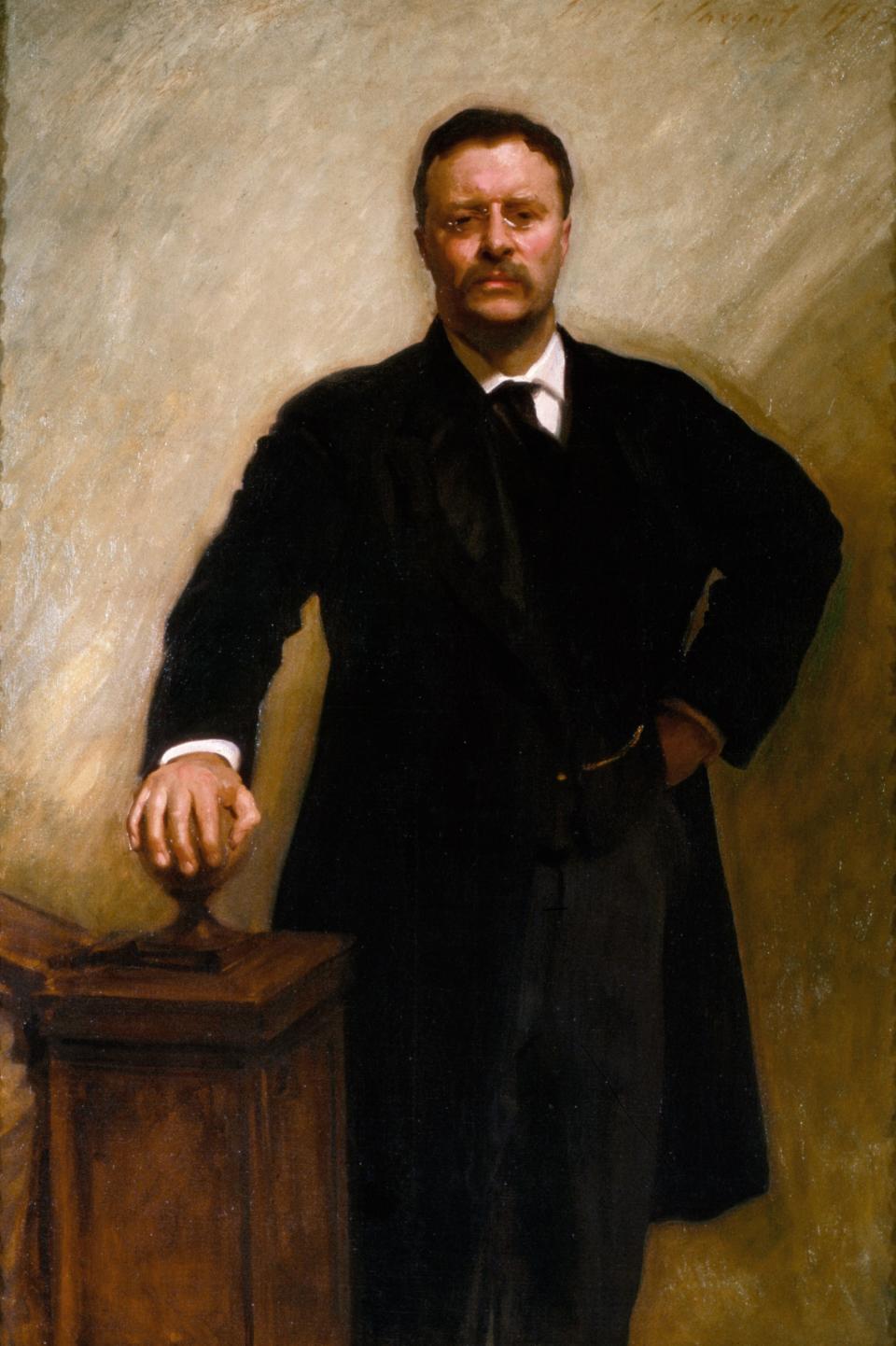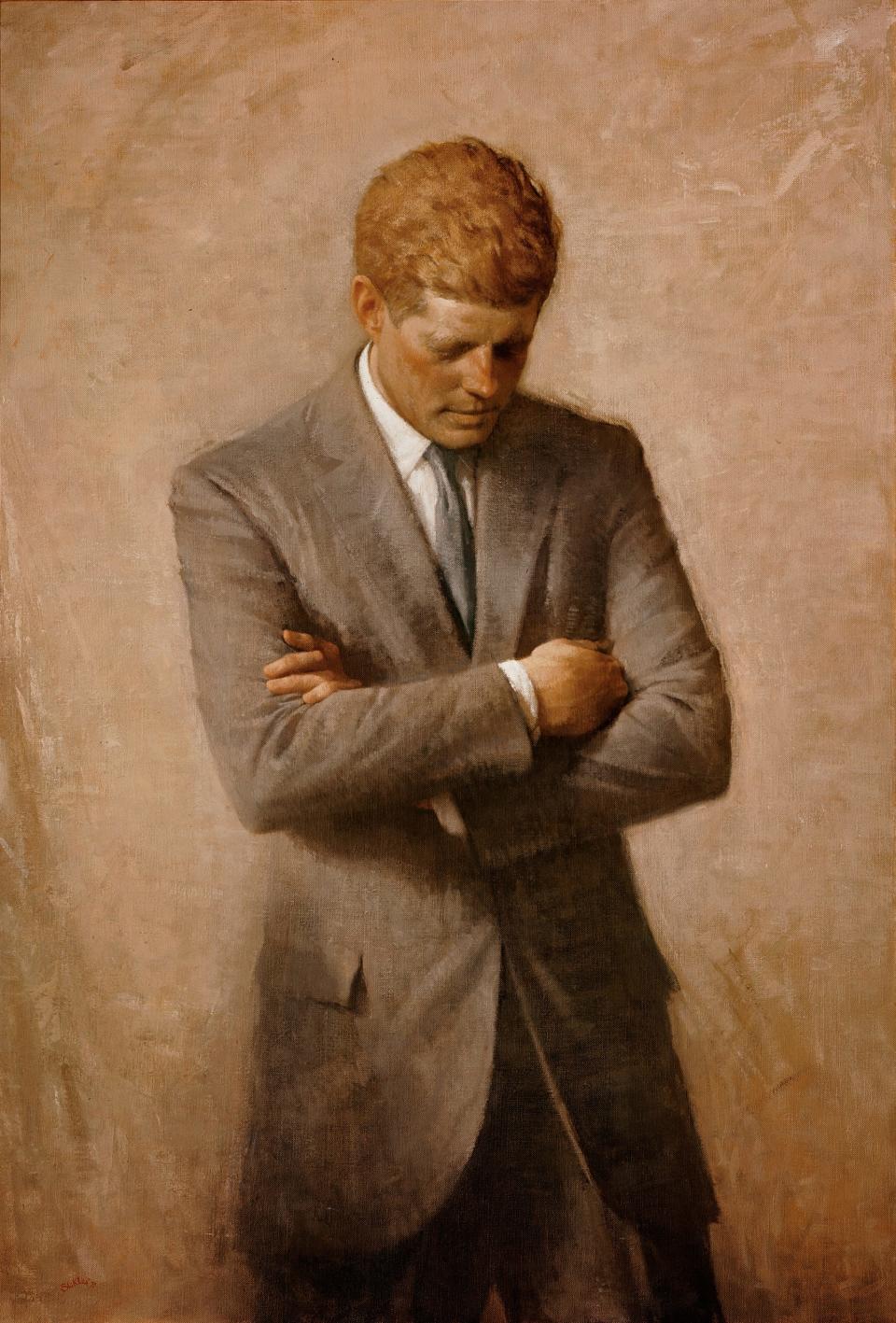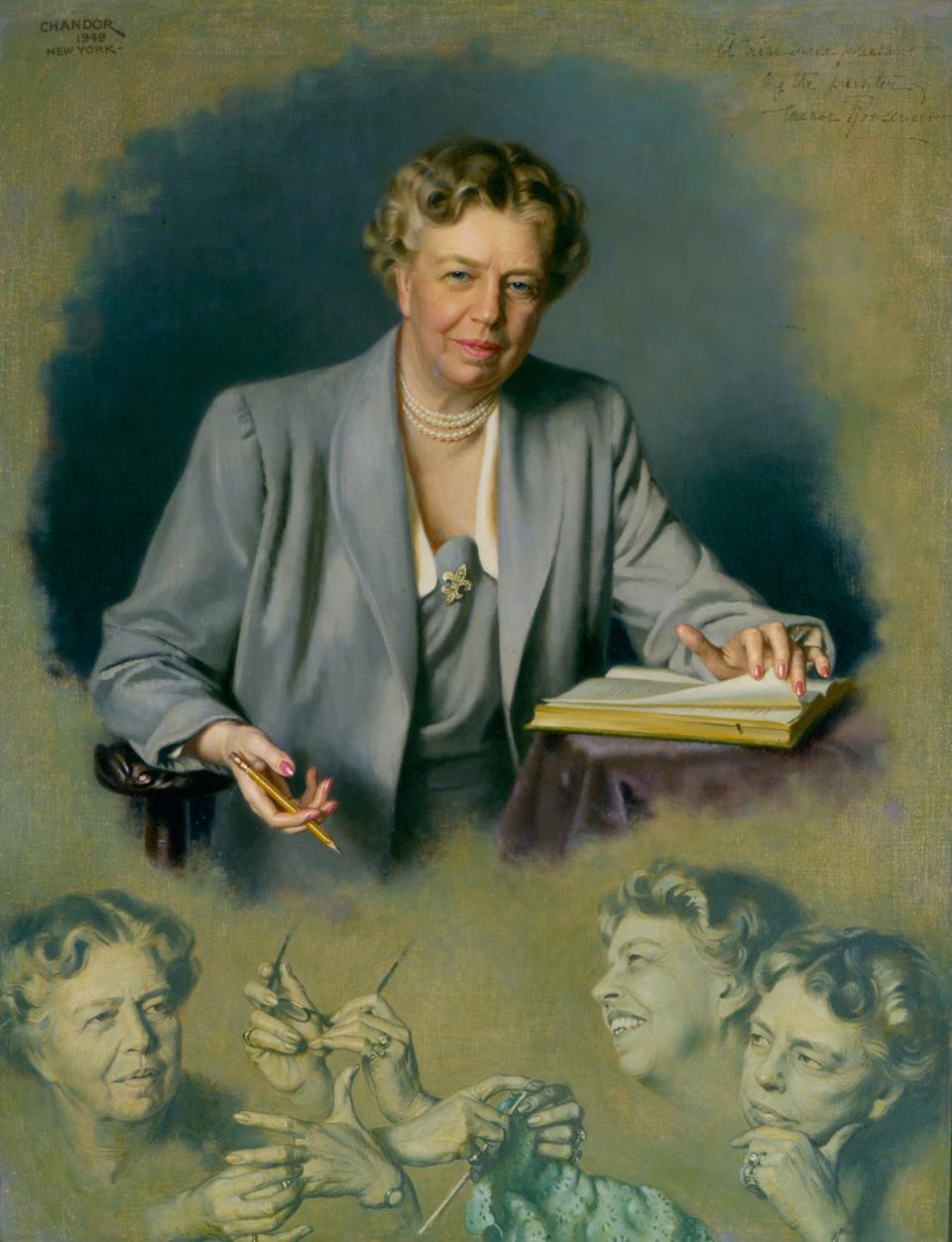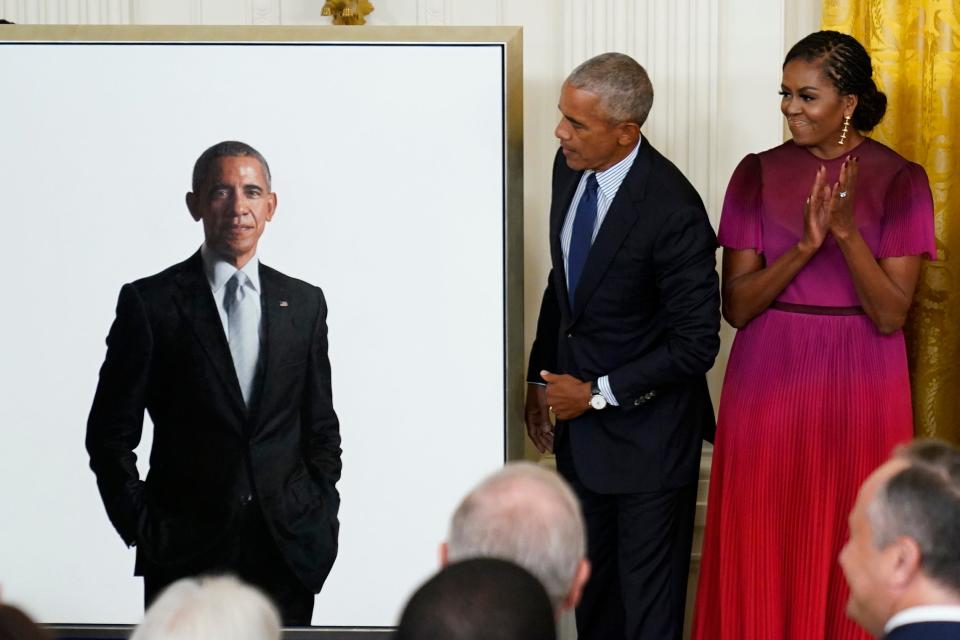Roosevelt, Lincoln and the Obamas. The stories behind iconic presidential portraits.
- Oops!Something went wrong.Please try again later.
- Oops!Something went wrong.Please try again later.
- Oops!Something went wrong.Please try again later.
- Oops!Something went wrong.Please try again later.
- Oops!Something went wrong.Please try again later.
- Oops!Something went wrong.Please try again later.
President Barack and Michelle Obama’s official White House portraits were unveiled this month in the East Room, an American cultural tradition that has helped build a visual archive of the presidency spanning more than two centuries. These portraits have also played an underrated role in building civic bonds between Americans and their elected leaders.
Perhaps the most famous presidential portrait is the first: Gilbert Stuart’s full-length painting of George Washington, purchased by Congress for $800 and later installed in the newly occupied White House.
The artist stuffed the painting with symbolism, including the stars and stripes of the new flag, civilian clothes balanced by a sword of command, and even a rainbow.
A history of portraits
The War of 1812 transformed Washington’s portrait into an icon for the new republic. Hours before the British burned down the White House, First Lady Dolley Madison ordered that the portrait be saved.
A team of White House staff — including a steward, a gardener and an enslaved man named Paul Jennings — broke the frame and removed the canvas. It was loaded into a cart and snuck away to the Virginia countryside to await the safe return of elected leaders to the White House.
Before photography, presidential portraits helped early Americans become familiar with their chief executive. They were circulated in election campaigns. Abraham Lincoln grasped the political value of presidential images in a modernizing society: when the East Room was opened to view a painting of Lincoln at the first reading of the Emancipation Proclamation, 7,000 visitors a day crowded in to see it.
Opinion alerts: Get columns from your favorite columnists + expert analysis on top issues, delivered straight to your device through the USA TODAY app. Don't have the app? Download it for free from your app store.
The creation of that painting also illustrates the challenges for a presidential portrait-maker. To recreate the scene, artist Francis Carpenter lived in the White House for six months, had cabinet members sit for him, got Mathew Brady to take pictures of the president, and probed Lincoln on his memory of the room that day.
Posing Theodore Roosevelt
Legendary American painter John Singer Sargent had his own challenges painting Theodore Roosevelt. After the president tired of the artist following him around in search of a good pose to capture, Roosevelt said, “The trouble with you, Sargent, is you don’t know what you want.”

“No,” the artist shot back. “The trouble, Mr. President, is that you don’t know what a pose means.”
Roosevelt clenched a banister post and said, “Don’t I!” -- at which point Sargent said, “don’t move an inch. You’ve got it now.” And that was the portrait he painted for history, of Roosevelt grasping the banister post.
How presidents vacation: Where'd you spend your summer vacation? How does it measure to presidents' favorite spots?
Interpreting presidents and first ladies
Artists are not photographers, they are interpreters. Everything -- from eyes and eyebrows, to the lines used to draw hair, to the pursing of lips and the angle of a cocked elbow -- is a window into the heart of the subject. As Lincoln’s portraitist watched the president in cabinet meetings, he observed how careful a listener he was and painted his official portrait after his death with Lincoln’s hand under his chin.

John F. Kennedy’s portraitist Aaron Shikler famously did not portray Kennedy’s eyes, instead depicting him looking down with his arms crossed, in order to show the 35th president as a thinker.
White House tours: The White House is fully open for tours. Why Jacqueline Kennedy deserves some credit.
Portraits of first ladies were not as common until later in the 19th century. The Woman's Christian Temperance Union commissioned a portrait of Lucy Webb Hayes as a gift after she forbade liquor at the White House.

One of my favorites is Grace Coolidge in a vivid red dress with a hound at her side that captures her zest and popularity in Washington society. Eleanor Roosevelt's portraitist brought forth her life and energy by depicting four separate faces -- and four sets of busy hands.
Portraying the Obamas
I was honored to be on hand when the Obamas had their portraits unveiled. Since the Kennedy portraits, the White House Historical Association has funded the official portraits of our presidents and first ladies and acquired portraits of others who were missing from the collection. Recent presidents and first ladies typically consider their artists before leaving office and approve the portraits before their formal presentation to the public, to the White House Collection, and to White House history.
White House weddings: When your wedding is at the White House, no detail is too small – even in the 1800s
For the artists, the opportunity to interpret America’s leaders is the work of a lifetime, but one that stays confidential until the unveiling. “You just hang in there and work,” said Robert McCurdy, who painted President Obama’s portrait. “Refine, refine, refine, work it down until you get to that place.” Michelle Obama’s portraitist Sharon Sprung told me how she had to turn her painting to the wall any time anybody came into her studio. “I knew it was done when she started to breathe,” she said.

The Obamas enriched this history in 2009 when they hosted a ceremony with the descendants of Jennings, the enslaved man who worked in the Madison White House and who helped remove the iconic painting of George Washington as the British approached. Almost two hundred years later, dozens of Mr. Jennings’s descendants toured the White House and got to inspect the iconic work that their ancestor helped save.
And before they left, the Jennings descendants took a moment to stand for their own family photograph -- in front of the painting of George Washington.
Stewart D. McLaurin is a member of the USA Today Board of Contributors and president of the White House Historical Association, a private nonprofit, nonpartisan organization founded by first lady Jacqueline Kennedy in 1961 to privately fund maintaining the museum standard of the White House and to provide publications and programs on White House history.
You can read diverse opinions from our Board of Contributors and other writers on the Opinion front page, on Twitter @usatodayopinion and in our daily Opinion newsletter. To respond to a column, submit a comment to letters@usatoday.com.
This article originally appeared on USA TODAY: The Obama portraits are the latest in a long of presidential art

